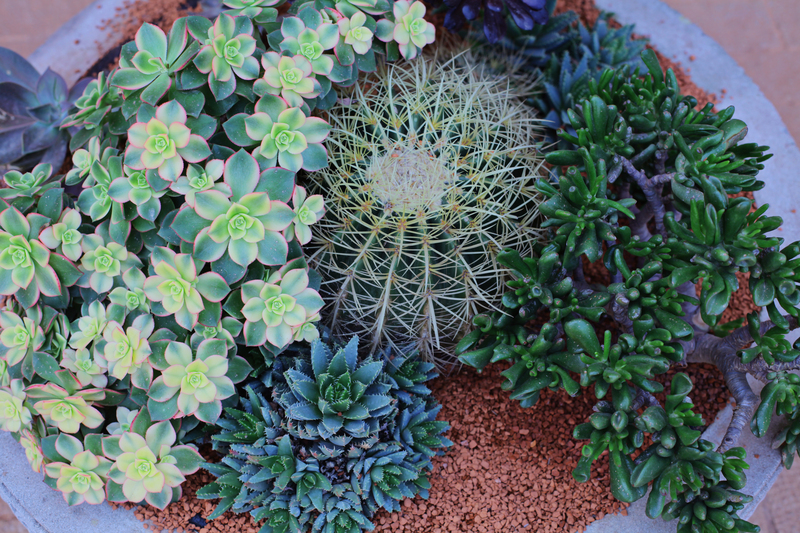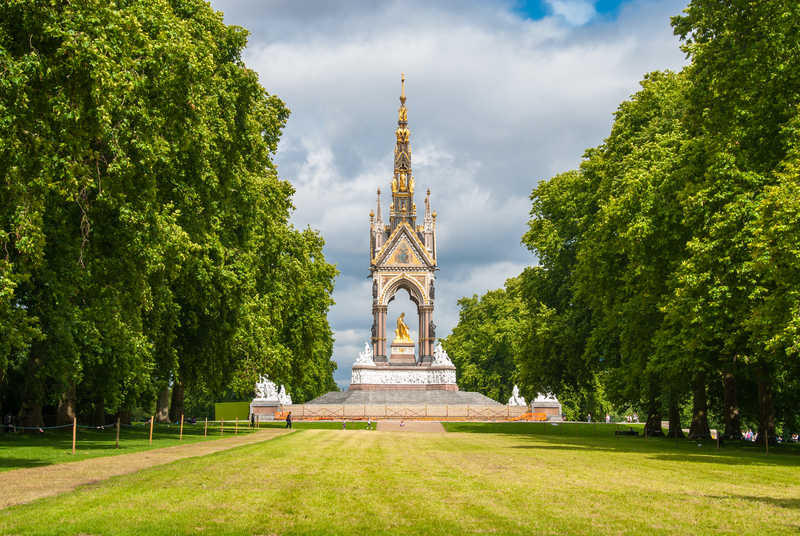Evergreen Climbers for Shade: Greenery in Every Dark Nook
Posted on 29/06/2025
Evergreen Climbers for Shade: Greenery in Every Dark Nook
Are you seeking lush, year-round greenery to enliven those shady, overlooked corners of your garden? Evergreen climbers for shade present a versatile solution, bringing vibrant foliage, seasonal flowers, and even fragrance to those tricky, low-light spaces where most plants struggle. Whether you have a north-facing wall, a shadowy fence, or a pergola that gets little sunlight, the right evergreen climber can seamlessly elevate your outdoor (and even indoor) spaces with beauty that lasts throughout the seasons.
Why Choose Evergreen Climbers for Shade?
Many gardening enthusiasts agree: Evergreen climbers transform lackluster, shaded areas into verdant retreats. Unlike their deciduous cousins, evergreen climbing plants retain their foliage all year round, offering texture and color through even the bleakest winters. Their ability to thrive in shade means they're perfect for problem areas where most plants falter. Here's why these amazing plants should be on your gardening list:
- Year-round interest: No barren walls in winter; enjoy persistent green views.
- Low maintenance: Most evergreens require minimal care once established.
- Versatile aesthetics: From glossy leaves to delicate blooms, create a tapestry of green, gold, or even variegated color.
- Wildlife-friendly: Shelter and food for pollinators and beneficial insects.
- Reliable screening: Provide privacy and soften unsightly structures.

Top Evergreen Climbers for Shade
Let's dive into some shade-tolerant evergreen climbers that will flourish in your garden's darkest nooks, balconies, or patios:
1. Hedera helix (English Ivy)
One of the most adaptable climbers, English Ivy is perfect for deep shade. Its evergreen foliage comes in various leaf shapes--sometimes variegated, sometimes pure green. It's easy to grow, hardy, and can cling to almost any surface. English Ivy is ideal for covering ugly walls, empty spaces under trees, or even as a ground cover.
- Thrives in full to partial shade
- Tolerates urban pollution and poor soil
- Needs some maintenance to prevent invasiveness
2. Trachelospermum jasminoides (Star Jasmine)
Star Jasmine dazzles with its intensely fragrant white flowers during the summer and glossy dark green leaves year-round. Ideal for shadier locations (though it flowers best with some dappled light), it's perfect for training over trellises and pergolas. As a bonus, its foliage often turns bronze in colder winters, providing additional seasonal interest.
- Partial shade to sun (tolerates significant shade)
- Low maintenance and drought-tolerant once established
- Evergreen and highly decorative
3. Lonicera henryi (Evergreen Honeysuckle)
Evergreen Honeysuckle is a fast-growing, shade-tolerant climber with slender, glossy leaves and clusters of tubular yellow-red flowers in late spring and summer. It's a great choice for shade and brings pollinators to your garden.
- Tolerates full to partial shade
- Attracts hummingbirds, bees, and butterflies
- Lovely screening plant
4. Euonymus fortunei 'Silver Queen'
Not a true climber, but this versatile shrub's stems will scramble and climb with support. Its variegated evergreen foliage brightens dark spots with creamy edges and silvery sheen. Euonymus fortunei works on walls, fences, or as an interesting ground cover.
- Works well in deep shade
- Excellent for adding contrast and light
- Minimal pruning needed
5. Clematis armandii (Evergreen Clematis)
Evergreen Clematis is a truly spectacular evergreen climber, perfect for partially shaded walls. With its long, leathery foliage and profusion of fragrant white flowers in early spring, it brings both beauty and scent to your garden.
- Best in partial shade, avoid deep shade
- Stunning early bloom and tough foliage
- Prune lightly to shape after flowering
How to Successfully Grow Evergreen Climbers in Shade
Planting evergreen climbing plants for shade involves a bit of planning, but with the right care and location, you can ensure healthy, vigorous growth. Here are the crucial steps to success:
1. Choose the Right Spot
Evaluate your shaded area. Is it deep shade (like behind buildings or under large trees) or partial shade (where light filters through for part of the day)? Match the climber's requirements to your site to guarantee best results.
2. Prepare the Soil
Most shade-loving evergreens prefer fertile, well-draining soil. Improve heavy clay or sandy soil with plenty of organic matter. Adding mulch helps retain moisture and keeps roots cool--a big advantage in dry shade.
3. Provide Support
Whether you're planting ivy for shaded fences or training clematis up a trellis, install sturdy supports at planting time. Some plants twine (like honeysuckle), while others (such as ivy) cling directly to walls. For tricky spaces, consider wire grids or mesh for easy attachment.
4. Plant and Water
Dig a hole twice as wide as the root ball. Plant at the same depth as the nursery pot and gently firm soil around roots. Water thoroughly after planting, and keep young climbers well-watered for the first season.
5. Ongoing Care
- Water regularly during dry spells, especially in the first year
- Mulch annually to retain moisture and suppress weeds
- Prune as needed to maintain desired shape and size
- Feed annually with balanced, slow-release fertilizer in spring
Benefits of Evergreen Climbers for Every Shaded Nook
Evergreen climbers are far more than decorative. They can dramatically improve your garden's microclimate, visual appeal, and value.
1. Soften Ugly Structures
Blank walls, sheds, or unsightly fences are instantly camouflaged by a curtain of green. Evergreen climbers knit seamlessly into both modern and traditional landscapes.
2. Wildlife Shelter
Thick foliage provides year-round cover for birds, insects, and even small mammals. Some climbers (like honeysuckle and ivy) offer food as well as shelter, supporting local biodiversity.
3. Air Quality Improvement
Plants in shaded corners help filter dust and pollutants from the air--especially important in urban gardens.
4. Temperature Regulation
Evergreen climbers shade walls and outdoor structures, helping to moderate indoor and outdoor temperatures. In summer, they keep surroundings cool; in winter, they buffer winds and cold drafts.
5. Versatility
Climbers like evergreen jasmine, ivy, or honeysuckle look at home creeping over garden arches, up house walls, or brightening dingy alleyways. Indoors, they can be grown on moss poles or wire frames to create living art.
Creative Inspiration: Using Evergreen Climbers in Shady Spaces
You don't need a sprawling garden to embrace the beauty of evergreen climbing plants in shade. Try these imaginative ideas:
- Vertical gardens: Attach trellises to apartment balconies and let climbers flourish where pots and planters can't.
- Camouflage unsightly corners: Hide utility boxes, compost bins, or air conditioners behind lush greenery.
- Green privacy screens: Build living fences along shaded property boundaries without sacrificing style.
- Garden rooms: Divide outdoor spaces visually with leafy partitions using quick-growing climbers.
- Courtyards and alleys: Instantly transform dark, echoing areas into cozy retreats with layers of textures and color.
Common Problems and Solutions with Evergreen Shade Climbers
Yellow Leaves or Poor Growth
This usually indicates poor soil drainage, root competition, or lack of nutrients. Improve soil with organic matter and feed plants annually.
Pest Issues
Scale insects and aphids sometimes target evergreens like ivy and jasmine. Use organic controls such as neem oil or encourage beneficial predators like ladybugs.
Overgrowth and Invasiveness
Some shade-tolerant climbers (notably English Ivy) can grow aggressively. Prune regularly to maintain shape and prevent unwanted spread, especially near native woodlands or delicate structures.
Limited Flowering in Deep Shade
Many flowering evergreen climbers bloom best with a few hours of indirect light. In very dark locations, consider foliage-focused climbers (like ivy, Euonymus, or Fatshedera) and enjoy their structure year-round.

Evergreen Climbers Maintenance Calendar
- Spring: Feed with balanced fertilizer, mulch, prune after flowering
- Summer: Water in dry spells, watch for pests
- Autumn: Tidy up growth, mulch to protect roots
- Winter: Minimal intervention needed--just admire the winter greenery!
Conclusion: Transform Shaded Spaces with Evergreen Climbing Plants
With their persistent foliage, ability to thrive in limited light, and diverse range of forms, flowers, and colors, there's an evergreen climber for every shaded nook and overlooked patch in your garden. Whether you opt for the indestructible charms of English Ivy, the fragrant blooms of jasmine, or the versatile screening of honeysuckle or euonymus, you'll enjoy a tranquil, verdant retreat all year round.
A little care in plant selection, soil preparation, and regular maintenance will reward you with living walls, lush privacy screens, and the satisfaction of turning even the darkest corners into highlights of your landscape. Invest in the right evergreen climbers for shade--and discover how much beauty, texture, and life flourishes in your garden's shadowy secrets!
Frequently Asked Questions
- What is the best evergreen climber for deep shade?
Hedera helix (English Ivy) is favored for its shade tolerance and easy maintenance in low-light spots. - Can flowering evergreen climbers thrive in shady gardens?
Many will bloom in partial shade--try Trachelospermum jasminoides (Star Jasmine) or Lonicera henryi for best results. - Do evergreen climbers need lots of watering?
Once established, most are quite drought-tolerant, especially with regular mulching. - Will evergreen climbers damage walls or structures?
Some, like English Ivy, can cling tightly to walls--watch for potential harm to mortar or old wood, but proper pruning and monitoring prevents problems.
Bring evergreen climbing greens into your shaded spaces--and enjoy beautiful, year-round interest in every corner of your garden!

